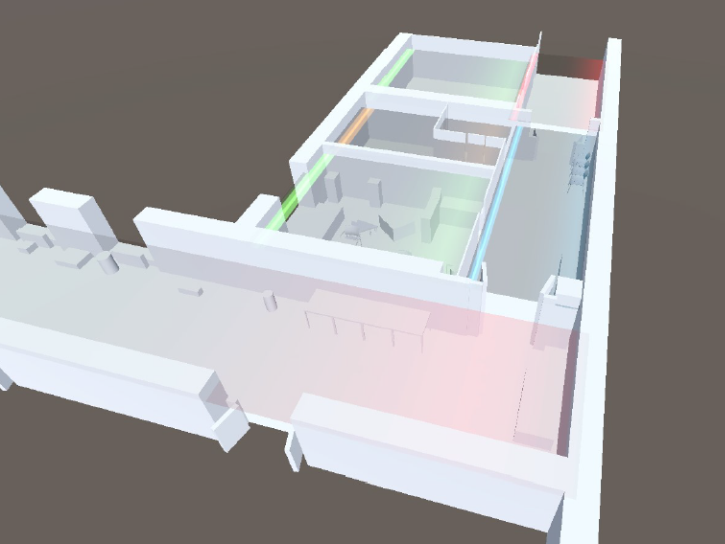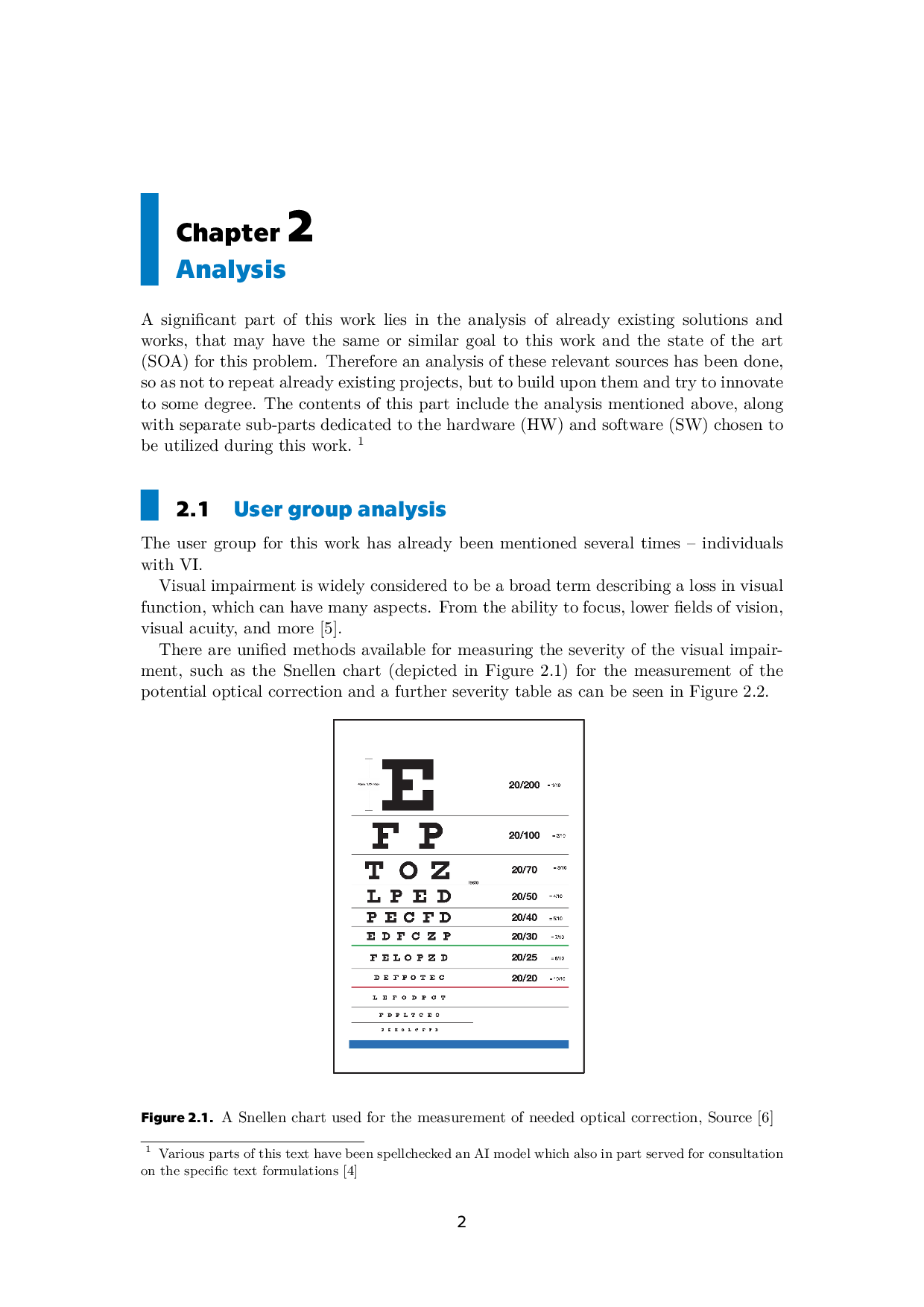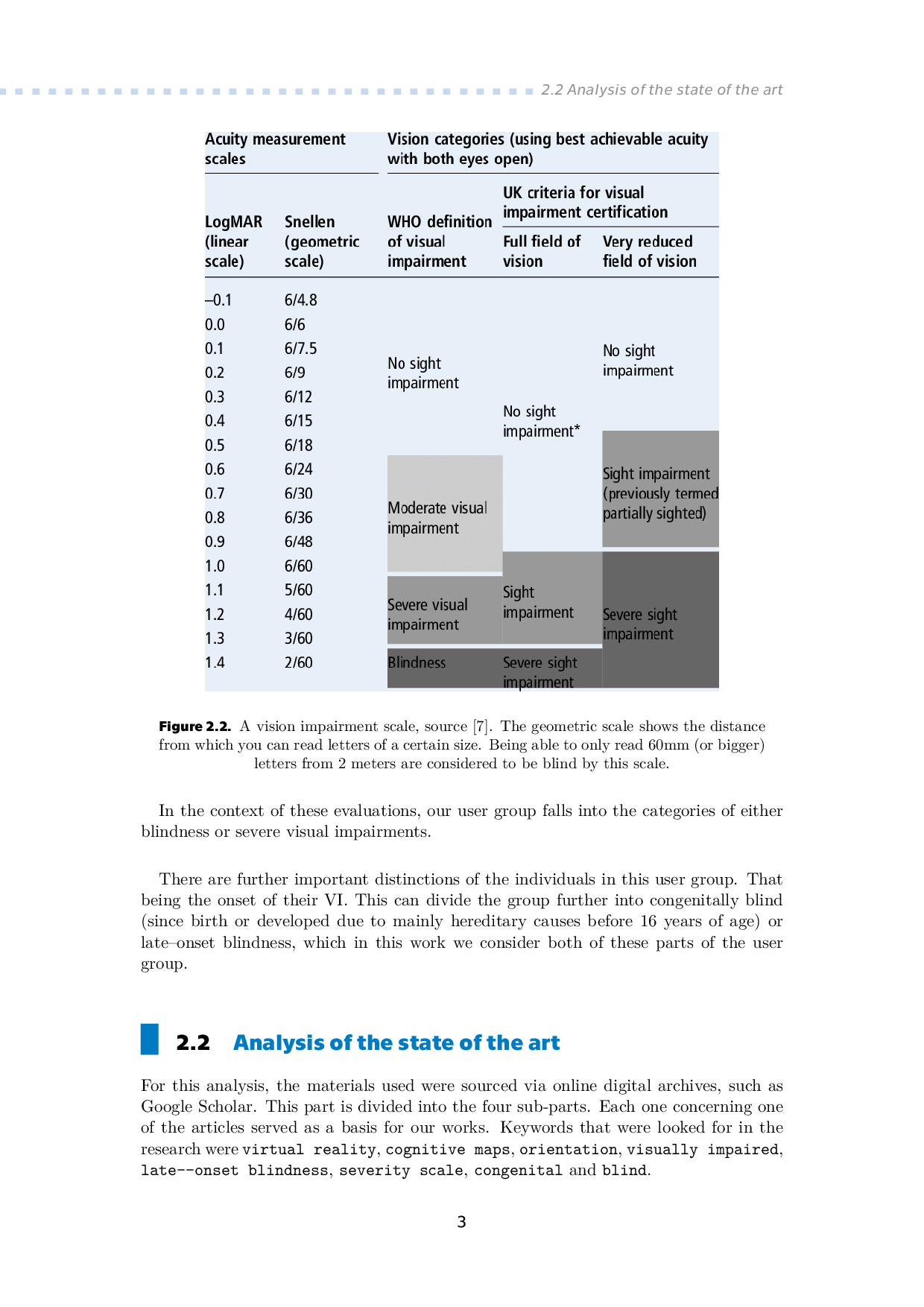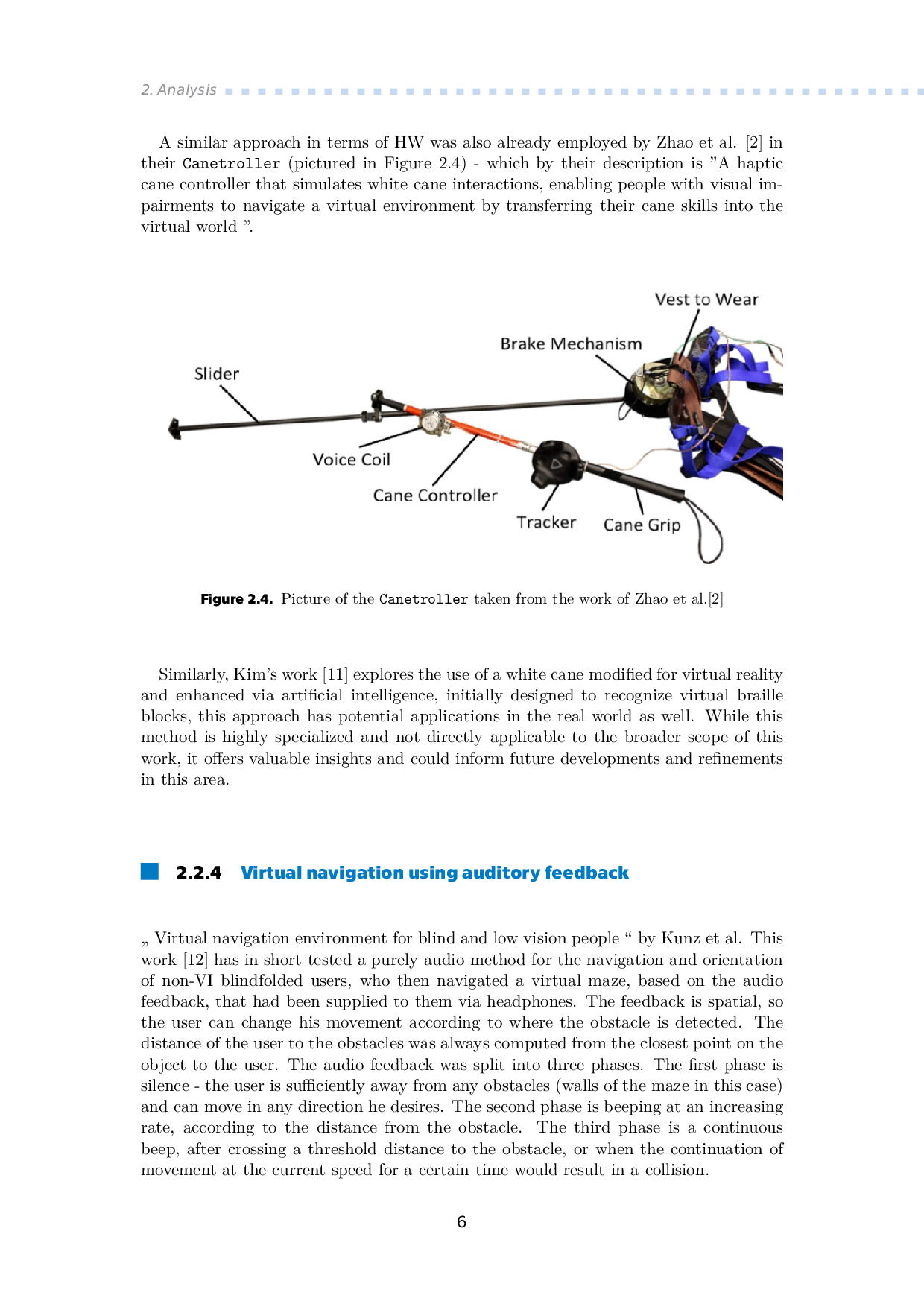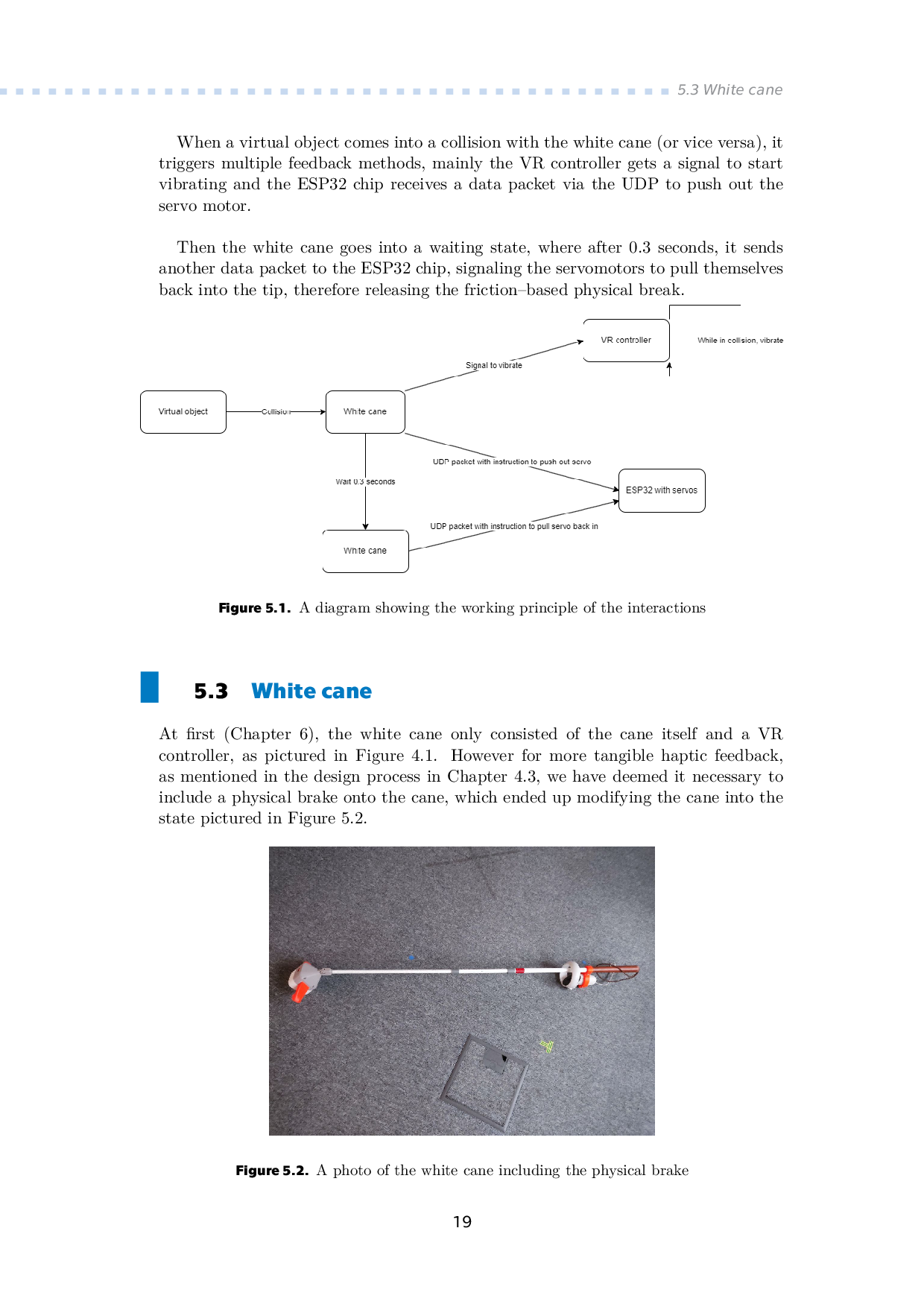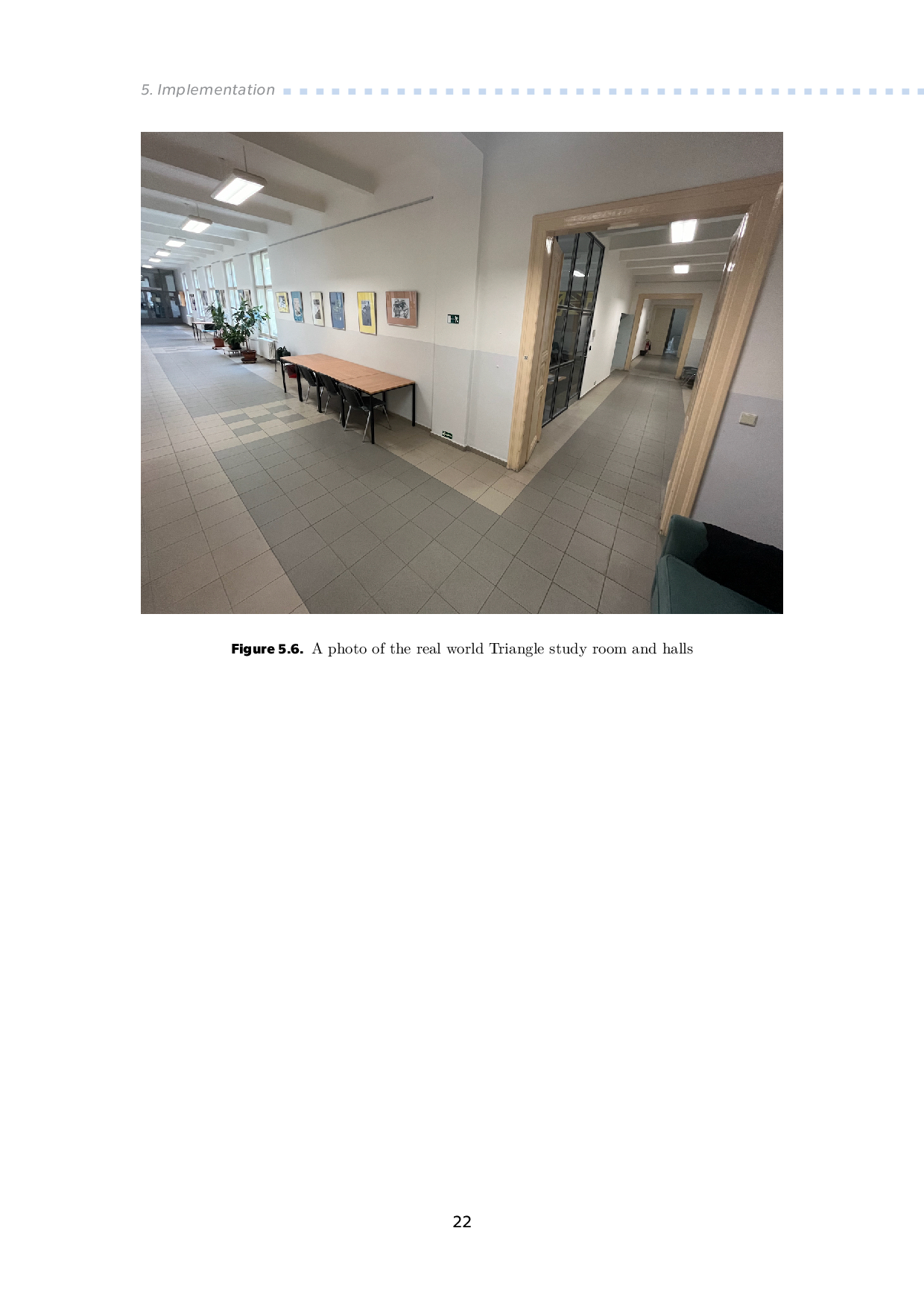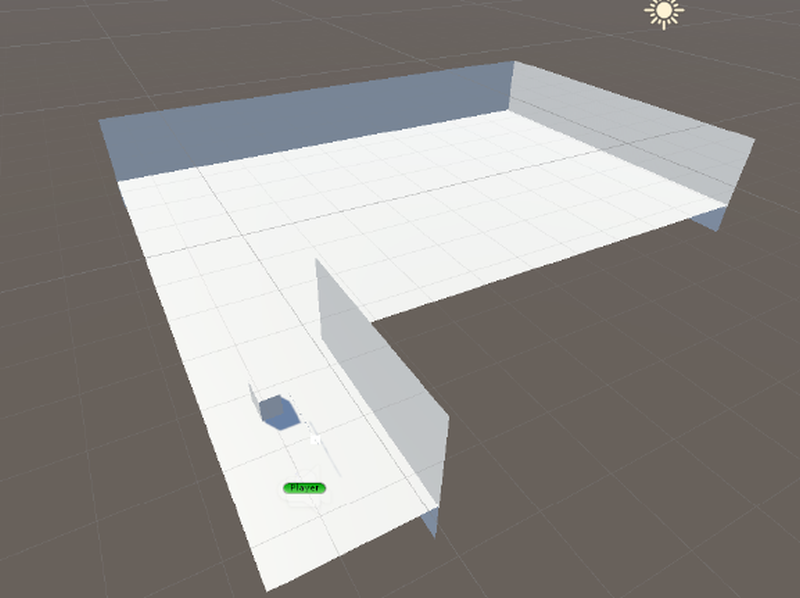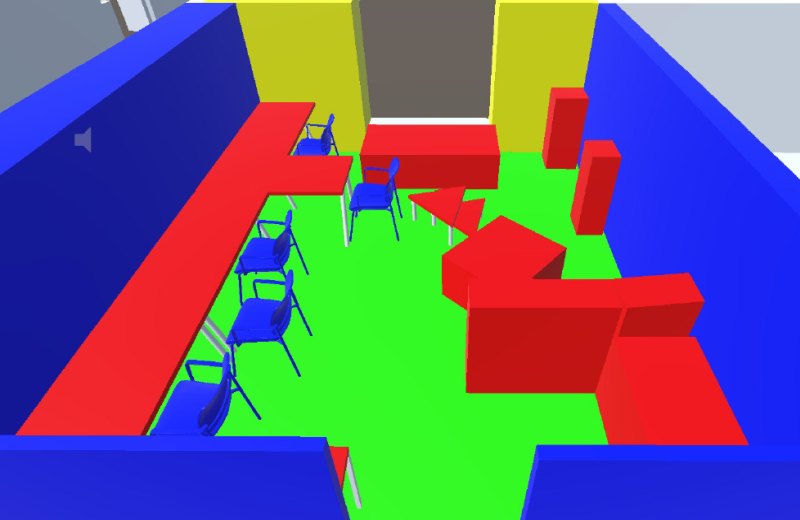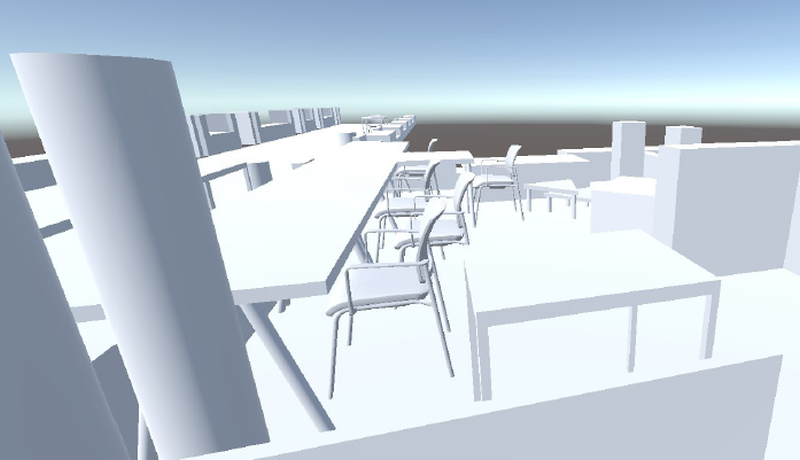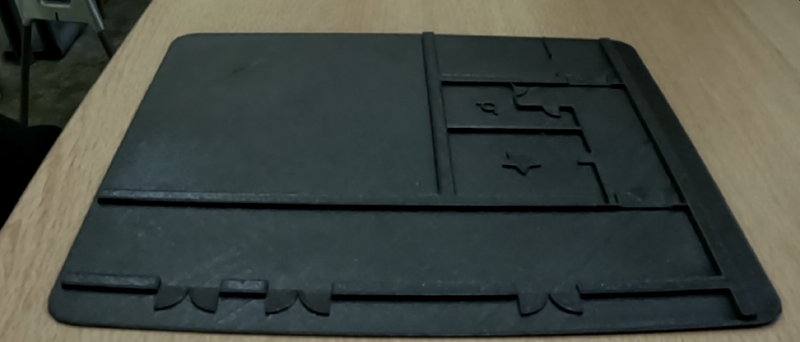Acquisition of cognitive maps by individuals with vision impairments using virtual reality
Individuals with vision impairments need specific tools to acquire spatial knowledge of the environment they need to orientate themselves, such as building floors. Such knowledge is called a cognitive map of the spatial environment and has multiple components (landmarks, distances, directions and routes). Different interaction methods have various performances in the acquisition of different components of spatial knowledge. Virtual Reality adapted for visually impaired individuals is a promising method for the acquisition of cognitive maps and practicing movement in a new environment while preserving safety. Methods that improve the feeling of being in the virtual environment (presence) exist. However, there is room for improvement in the case of visually impaired users.Thus the scope of this work is focused on the research, analysis, and prototyping of a virtual reality solution, that assists and provides an easy and safe way for visually impaired individuals to create a cognitive map in a controlled environment, which could then be used to navigate a real environment.
